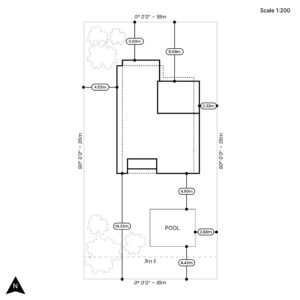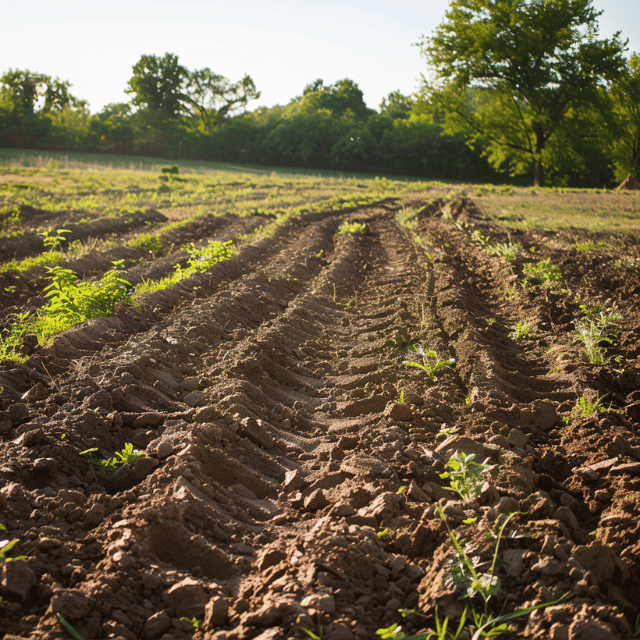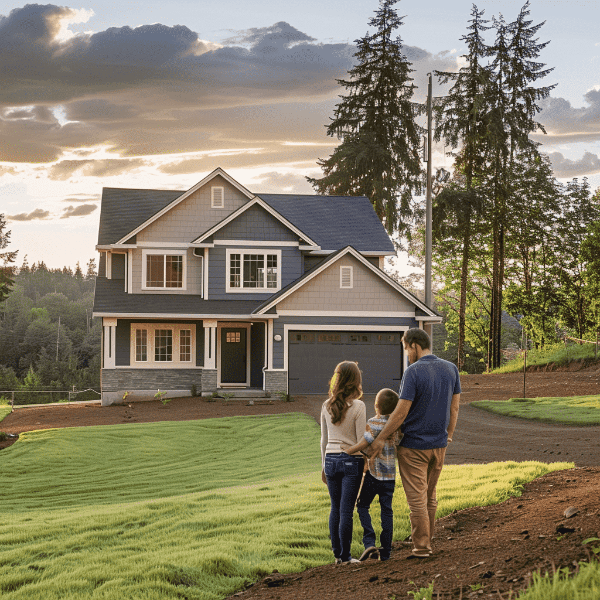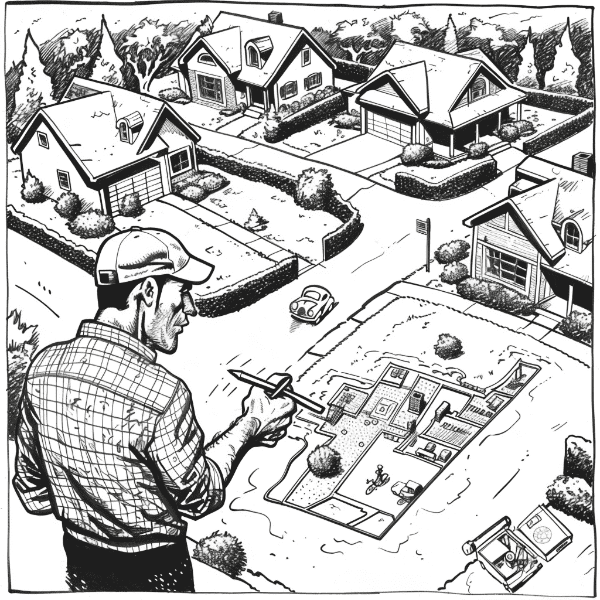Welcome to all things Site Plans! This comprehensive guide delves into the essentials of site plans, offering insights and tools to ensure your project not only takes off but soars.
Key Takeaways:
You’ll learn alot by reading this guide, here is a snapshot of what to expect:
- Essential Architectural Document: A site plan is a vital architectural drawing that depicts the layout of a property or development, detailing the placement of buildings, paths, and landscaping features.
- Critical for Permissions and Compliance: These plans play a crucial role in the planning phase, aiding in obtaining building permits and ensuring compliance with zoning and building codes.
- Foundation for Construction: Site plans act as detailed guides for construction efforts, ensuring that every aspect of the development aligns with the initial design and approved plans.
- Detailed Environmental and Structural Insights: Beyond layout, site plans provide insights into environmental and structural considerations, including topography, drainage, and utility routing, crucial for informed project execution.
The Fundamentals of Site Plans
What is a Site Plan?
A site plan is an architectural drawing that outlines the specific layout and design of a development project or property.
Essential for architects, builders, and developers, a site plan provides a bird’s-eye view, showcasing where buildings, roads, pathways, parking spaces, and landscaping will be situated on the site.
Additionally, it details property lines, utility routes, drainage systems, and, when relevant, the land’s topography. This crucial document not only aids in the design and planning phase but also is vital for securing building permits and guiding the construction process.
Site plans are indispensable tools in ensuring projects are executed accurately, efficiently, and in compliance with local zoning and building regulations.
Components include:
- Property Lines: Establishing the project’s boundaries.
- Existing Structures: Documentation of pre-existing buildings.
- Proposed Additions: Outline of new constructions or extensions.
Example Site Plan
Here’s an example of a single-family home site plan, including a pool and landscape features.

The Purpose and Benefits of Site Plans
The significance of a site plan transcends mere regulatory compliance; it’s about bringing clarity and vision to a project. A well-crafted site plan is a tool for efficiency, facilitating smoother communication among stakeholders and ensuring that every detail is accounted for.
It lays the groundwork for securing permits, optimizing land use, and preventing costly mistakes down the line.
Benefits include:
- Enhanced Communication: Keeps all parties on the same page.
- Streamlined Permitting Process: Eases the approval of regulatory bodies.
- Visualizing the Project: Provides a clear picture of the end goal.
Key Components of a Site Plan
Soil and Survey Tests: The Foundation of Your Site Plan
Before laying the first stone, understanding the lay of the land is paramount. Soil and Survey tests offer a sneak peek below the surface, revealing the secrets hidden beneath. This preliminary step is crucial, as it influences design decisions, structural foundations, and the overall feasibility of your project.
Without this bedrock of information, even the most meticulously planned projects can face unforeseen challenges.
Key tests include:
- Soil Quality Assessment: Essential for determining the suitability of the foundation.
- Topographical Survey: Maps out elevation, gradients, and natural features.

Decoding Site Plan Terminology
Embarking on a construction project can feel like learning a new language. Familiarity with site plan terminology not only facilitates better communication with architects and builders but also empowers you to make informed decisions. Understanding these terms is crucial for navigating the complexities of your project, ensuring that you’re not lost in translation as you bring your vision to life.
Essential terms include:
- Setback: The minimum distance between a structure and the property boundary.
- Easement: Grants the right to use another’s land for a specific purpose.
Understanding Site Plan Drawings
Site plan drawings are the narrative of your project, illustrating the story of what’s to come. These detailed drawings serve as a visual guide, mapping out every aspect of the proposed development. From the positioning of buildings to the layout of walkways and gardens, these drawings provide a comprehensive overview, ensuring every detail is meticulously planned and accounted for.
They typically feature:
- Dimensioned Layouts: Offering precise measurements for construction.
- Landscaping Details: Showcasing the planned green spaces.
- Utility Locations: Indicating essential services like water and electricity.
Advanced Site Plan Types
3D Site Plans: Visualizing the Future
The evolution from 2D to 3D site plans represents a significant leap forward in architectural planning. These dynamic models offer a lifelike preview of the proposed development, allowing stakeholders to virtually walk through their project.
This immersive experience is invaluable, helping to identify potential issues and refine designs before the physical work begins.
Advantages include:
- Realistic Visuals: Provides a detailed preview of spatial arrangements.
- Interactive Exploration: Enables viewing the project from various angles.
Contour Site Plans: Navigating Terrain

Terrain plays a pivotal role in the planning and execution of construction projects. Contour site plans are indispensable for projects on varied terrain, offering a detailed map of the land’s natural slopes and elevations.
This information is critical for effective water drainage, landscaping, and building on slopes, ensuring that the natural terrain is an asset rather than an obstacle.
Insights provided:
- Elevation Levels: Key for drainage and landscaping plans.
- Slope Management: Strategies for construction on uneven ground.
Landscape Site Plans: Designing Outdoor Spaces
Landscape site plans extend beyond mere aesthetics, crafting spaces that enhance the quality of life. These plans consider the interplay between natural and built environments, creating outdoor areas that are not only beautiful but functional and sustainable. F
rom serene gardens to vibrant public spaces, landscape site plans are about reimagining the possibilities of outdoor living.
Focus areas include:
- Functionality: Ensuring the space meets user needs.
- Aesthetics: Choosing cohesive themes and materials.
- Sustainability: Incorporating environmentally friendly practices.
Optimizing Your Site Plan
Choosing the Perfect Lot of Land
The quest for the perfect lot is the first step in your project’s journey. This choice dictates not just the project’s feasibility but its future success. A thorough analysis, guided by a detailed plot plan, can uncover the lot’s potential, highlighting opportunities and constraints. The right lot sets the stage for a project that not only meets but exceeds expectations.
Considerations include:
- Location: Access to amenities and environmental factors.
- Orientation: Maximizes natural lighting and energy efficiency.
- Topography: Impact on construction and design possibilities.

Incorporating Retaining Walls in Your Site Plan
Retaining walls are more than structural necessities; they are design elements that enhance functionality and aesthetics. These walls play a critical role in managing slopes, preventing erosion, and creating level areas for building and landscaping. Including retaining walls in your site plan can transform challenging terrain into valuable, usable space.
Benefits include:
- Erosion Control: Preserves soil integrity.
- Terracing: Enables effective use of sloped land.
Tools and Technologies in Site Planning
The Best Site Plan Software: Tools for Modern Designers
The digital revolution has brought forth an array of site plan software, each designed to streamline the planning process. These tools offer precision and flexibility, allowing for the exploration of various design scenarios with ease. Whether you’re a seasoned architect or a first-time builder, the right software can elevate your project from good to great.
The best site plan software options include:
- Presite: User-friendly with powerful flexible features for all user types.
- AutoCAD: Renowned for its precision and professional capabilities.

The Future of Construction Technology: Innovations in Site Planning
The future of construction technology is bright, with innovations aimed at making site planning more efficient, accurate, and sustainable. From aerial drone surveys capturing detailed topographies to virtual reality previews of planned spaces, these advancements promise to transform the construction landscape, making it possible to envision and execute projects with unprecedented clarity and confidence.
Emerging technologies include:
- Aerial Surveys: For accurate topographical data.
- Virtual Reality: Offers immersive previews of designs.
Practical Application and Compliance
Navigating Zoning Laws and Regulations with Your Site Plan
Adhering to local zoning laws and building codes is not just about compliance; it’s about ensuring your project’s longevity and legality. A well-prepared site plan can facilitate this process, providing a clear framework that meets regulatory standards. Navigating these legal landscapes with your site plan in hand ensures your project advances smoothly from paper to reality, avoiding potential setbacks and fines.
Compliance tips:
- Research Local Regulations: Understand and adhere to local zoning laws.
- Building Codes: Ensure your plans meet safety and construction standards.
Final thought..
A meticulously crafted site plan is the cornerstone of any successful construction project. It provides a detailed preview, guides decision-making, and ensures regulatory compliance, setting the stage for a project that not only meets but exceeds expectations.
As we look to the future, embracing the latest tools and technologies in site planning will continue to be instrumental in transforming visions into tangible realities.
With this comprehensive guide as your starting point, you’re well-equipped to embark on your construction journey, confident in the knowledge that your project is built on a solid foundation.
